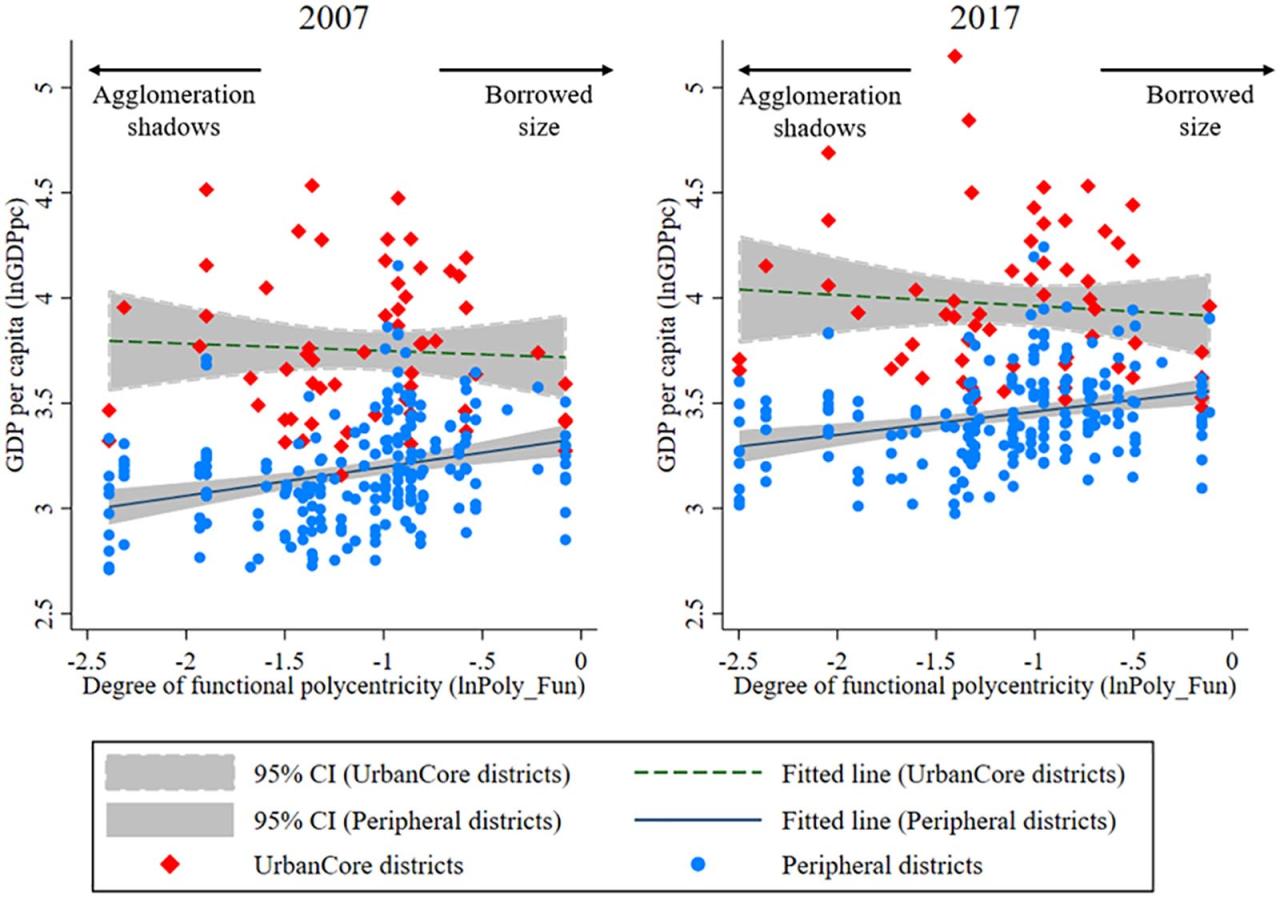← Back to Projects
Spatial patterns and sustainable outcomes
Increasingly, the focus of Stephan Schmidt's Research Group has been on the implications, effects and consequences of spatial patterns; What role do urban spatial patterns have on creating more sustainable outcomes? What is the relationship between aspects of the built environment, such as population density, and a range of environmental covariates, such as carbon emissions, urban heat, air quality among others?

Scatterplots and fitted lines presenting the relationships between urban heat island (UHI) effects and landscape metrics.
What is the relationship between open space patterns and the urban heat island effect? We examine the efficacy of urban spatial patterns at alleviating the urban heat island (UHI) effect in German metropolitan areas using landscape metrics to capture the spatial arrangement of urban footprints and greenspaces. Our research suggests that smaller, more fragmented parks and forested areas (as measured by the percentage of like adjacencies) can better mitigate urban heat. Similarly, we found that more patchy and fragmented urbanized areas (as measured by patch density and a contagion index) resulted in lower urban heat (Li and Schmidt, 2024).

The scatterplots and corresponding fitted lines display the relationship between the degree of polycentricity and the economic productivity of peripheral districts and urban cores.
We examine the role of regional polycentricity in enhancing economic productivity and minimizing spatial disparities simultaneously in German metropolitan areas. Our results indicate that polycentric development can effectively reduce regional disparities in urban regions, but not simultaneously promote economic productivity. These findings confirm previous studies that progress toward one goal hampers progress toward another. Further investigation at a finer scale suggests that the borrowed size effect is essentially a “win-loss” game between peripheries and urban core(s) within the same urban region. Peripheries benefit from the spillovers generated by nearby urban core(s), thereby narrowing regional economic gaps and leading to more equitable regions. However, the gains of the peripheries are canceled out by the losses of the urban cores, and polycentric development has an insignificant overall effect on regional economic productivity.
Related work:
Li, W. and Schmidt, S. (2024) Can spatial patterns mitigate the urban heat island effect? Evidence from German metropolitan regions, Environment and Planning B: Urban Analytics and City Science.
Li, W., Schmidt, S., & Siedentop, S. (2023). Can polycentric urban development simultaneously achieve both economic growth and regional equity? A multi-scale analysis of German regions. Environment and Planning A: Economy and Space, 0(0).


